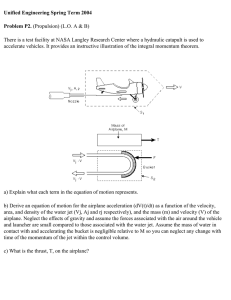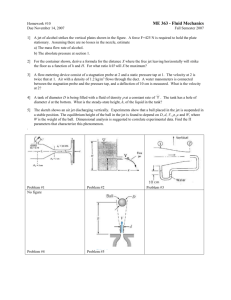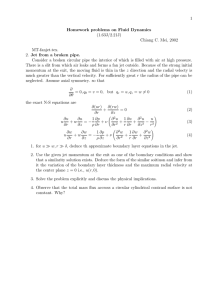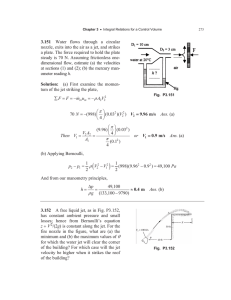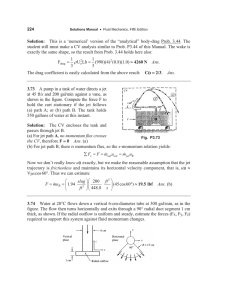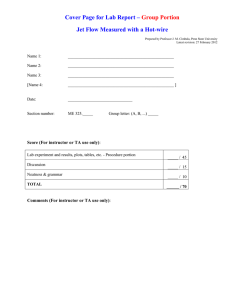Cover Page for Precalculations – Jet Flow Measured with a Hot-wire
advertisement
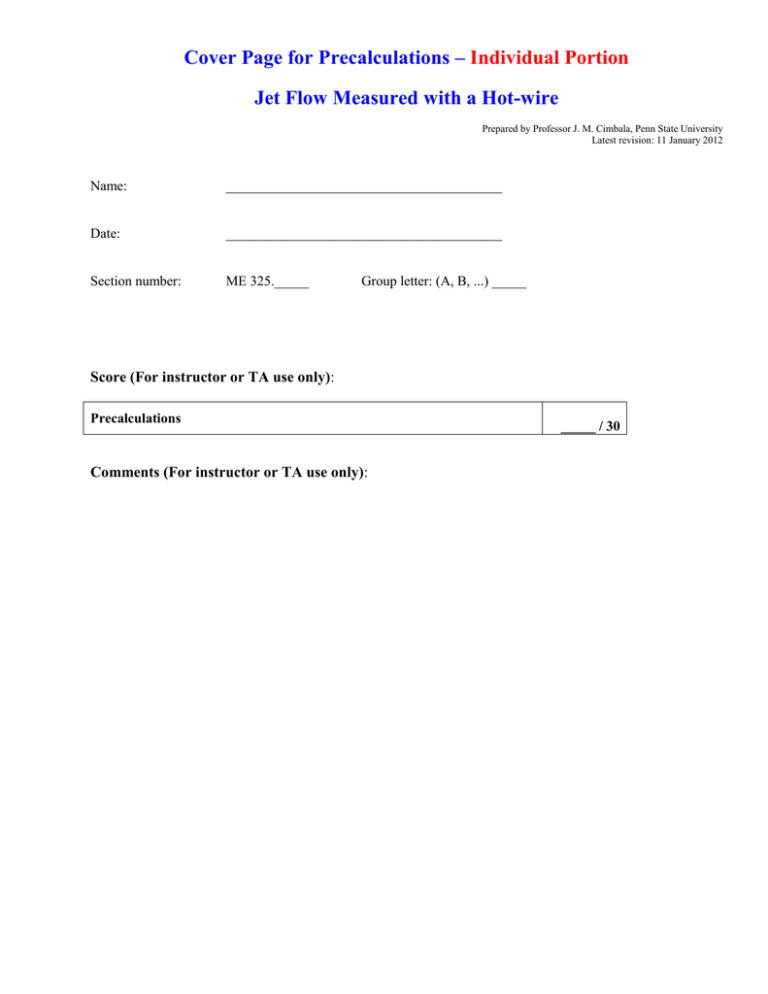
Cover Page for Precalculations – Individual Portion Jet Flow Measured with a Hot-wire Prepared by Professor J. M. Cimbala, Penn State University Latest revision: 11 January 2012 Name: ________________________________________ Date: ________________________________________ Section number: ME 325._____ Group letter: (A, B, ...) _____ Score (For instructor or TA use only): Precalculations Comments (For instructor or TA use only): _____ / 30 Precalculations In this lab experiment you will measure mean velocity U in a jet as a function of radial location r, at various axial locations (x direction). You will then calculate the mass flow rate of air at each axial location. This will be done by numerical integration of Eq. (2) of the Introduction, using the trapezoidal rule. Consider the simple integral, x7 I Bdx (3) x3 where B is some arbitrary function of x. To integrate Eq. (3) graphically, you would plot B as a function of x, and measure the area under the curve between x3 and x7, as shown in Figure 5. x7 I Bdx B x3 x1 x2 x3 x4 x5 x6 x7 x8 x9 x10 x Figure 5. Integration of an arbitrary function B(x) between x3 and x7; the integral is represented by the shaded region. Numerically, the area could be approximated by summing the areas of the four shaded trapezoids. For example, the area of the first trapezoid is (x4 – x3)(B3 + B4)/2. The total area I between the two limits is then approximated as 6 Bi Bi 1 i 3 2 I xi 1 xi (10) 1. (4) Now consider the mass flow rate of a turbulent round jet. In the space below, write a summation expression that enables you to integrate Eq. (2) of the Introduction using the trapezoid rule. Show all your work. m (5) Write down Eq. (5) on a separate sheet of paper, and bring it with you to the lab. (This is necessary since you need the equation to perform the lab, but you will hand in these Precalculations before starting the lab.) (5) 2. Do you expect m to increase, decrease, or stay the same as the hot-wire is positioned at increasing values of axial distance x? Explain. (7) 3. A pressure tap is mounted into the settling chamber of the jet, as sketched in Figure 6. This pressure is labeled the “stagnation pressure”. However, this is only an approximation, since the velocity U0 of the air parallel to the location of the pressure tap is not identically zero. Let us determine the accuracy of our approximation that this pressure is equal to the stagnation pressure. Using Bernoulli’s equation and conservation of mass (assuming incompressible flow with negligible frictional effects), develop an expression for jet exit velocity Uj as a function of d0, d, air, P0, and Pj only. Show all your work in the space below, and write your expression as Equation (6). Uj (6) Jet Uj Pj d Jet nozzle Uj U0 Filter and screens d0 “Stagnation pressure” tap (measures P0) High pressure air supply (shop air) Figure 6. Schematic diagram of the jet settling chamber and stagnation pressure tap. (3) 4. The air flow is of small enough Mach number to be approximated as incompressible. What then is the value of the pressure Pj at the jet exit plane? Explain. Pj (7) (5) 5. In the experimental setup in this lab, d0 = 3.5 inches, while d = 0.5 inches. Estimate the percentage error in the calculation of Uj that would result by assuming that P0 is equal to the stagnation pressure (which is the same as assuming that d0 is infinite). Show all your work in the space below: Percentage error = %. Experimental Objectives a. b. c. Calibrate a hot-wire. Measure mean velocity profiles in a turbulent jet at two axial locations. Calculate mass flow rate m in the jet at two axial locations, and observe how m changes with axial distance away from the jet.

